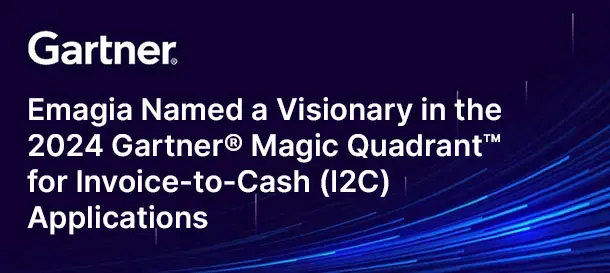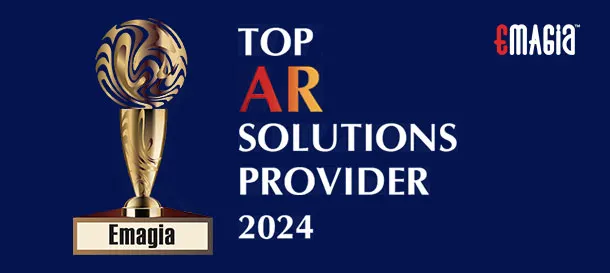In the world of finance, cash is the lifeblood of any business. It fuels operations, enables growth, and provides the stability needed to weather economic storms. Yet, for many companies, the pursuit of healthy cash flow is a constant struggle. The culprit? An outdated accounts receivable (AR) process. While a business may be successful in making sales and securing new customers, if it’s not efficiently collecting the money it’s owed, it’s essentially operating on borrowed time.
Recognizing that your AR process is outdated is the first and most critical step toward financial health. But how do you know if your current system is failing you? There are clear, unmistakable signs that your accounts receivable management process needs a complete overhaul. Ignoring these red flags can lead to a cascade of negative consequences, from strained customer relationships to a lack of working capital. This in-depth guide will walk you through the five most common red flags, offering detailed insights into what they mean for your business and why modernizing your approach is no longer optional—it’s an absolute necessity.
Red Flag #1: Over-Reliance on Manual Work and Spreadsheets
This is arguably the most fundamental sign of an outdated AR process. Many businesses, even those with significant revenue, still depend heavily on manual data entry, paper-based invoices, and complex spreadsheets. While these methods may have sufficed in a simpler era, they are no longer sustainable in today’s fast-paced, data-driven environment. A manual approach to accounts receivable is not just inefficient; it’s a liability that introduces a host of risks and bottlenecks.
The Hidden Costs of Manual AR Processes
The time spent on manual tasks is a direct drain on your team’s productivity. Imagine the hours dedicated each week to manually generating invoices, entering payment details, and reconciling transactions line by line in a spreadsheet. This administrative burden prevents your team from focusing on more strategic, high-value activities, like analyzing customer payment behavior or building stronger relationships. This isn’t just a matter of wasted time; it’s a failure to use your human resources to their full potential.
Risk of Errors and Discrepancies
Human error is an inescapable part of any manual process. A single typo in an invoice amount, an incorrect email address, or a misplaced decimal point can have a ripple effect, leading to payment delays and customer disputes. When payments are not properly matched to invoices due to manual data entry errors, it creates a backlog of unapplied cash. This “high volume of unapplied payments” creates chaos, making it difficult to get a clear picture of your company’s true financial standing. It can even lead to your collections team mistakenly chasing customers who have already paid, which can be damaging to your business reputation and a major source of customer friction. This is where the old way of doing things becomes a serious operational and reputational risk.
Lack of Scalability and Agility
As your business grows, so does the volume of invoices and payments. An AR process built on manual tasks and spreadsheets cannot scale to meet this demand. What was once manageable with a small client list becomes a logistical nightmare with hundreds or thousands of customers. The process becomes slower, more prone to errors, and more difficult to manage. You’ll find yourself needing to hire more and more people just to keep up, which drives up operational costs without a corresponding increase in efficiency. An accounts receivable process that can’t grow with you is holding your business back from its full potential.
Red Flag #2: Consistently High Days Sales Outstanding (DSO)
Days Sales Outstanding, or DSO, is a critical metric that measures the average number of days it takes for your company to collect revenue after a sale has been made. A consistently high or rising DSO is a flashing red light that your AR process is broken. It is the most telling symptom of an underlying problem and a direct indicator of poor cash flow management. If your business is taking too long to convert its credit sales into cash, it’s suffering from a form of financial anemia that can cripple its ability to operate and invest.
What a High DSO Really Means for Your Business
When DSO creeps up, it means cash is tied up in unpaid invoices for longer periods. This trapped working capital has a direct impact on your ability to pay your own suppliers, cover payroll, and fund new growth initiatives. It can force you to rely on credit lines or external financing, incurring unnecessary costs that eat into your profit margins. A high DSO is a clear signal that your collections process is failing to keep up with the pace of your sales. It suggests that there are significant inefficiencies in your billing, follow-up, or payment acceptance methods that are causing delays.
Understanding the Root Causes of High DSO
A high DSO isn’t a problem in itself—it’s a symptom. The real issues lie in the inefficiencies of your current process. Common culprits include:
- Late or inaccurate invoicing: If invoices aren’t sent out promptly or contain errors, the payment clock doesn’t even start ticking.
- Ineffective follow-up: A reactive collections approach, where you only chase payments after they are overdue, will inevitably increase your DSO.
- Lack of payment options: Limiting customers to outdated payment methods like physical checks adds unnecessary friction and delays the payment process.
An outdated accounts receivable process often fails to address these root causes, leading to a vicious cycle of delayed payments and financial uncertainty. To truly lower your DSO, you must address these systemic issues, not just the symptom.
Red Flag #3: Inconsistent and Reactive Collections
The collections process is not something that should be done on an ad-hoc basis. A modern, efficient AR function is proactive and consistent. A reactive approach, where your team only begins the collections effort after an invoice has become past due, is a surefire sign of an outdated system. This approach is not only less effective but also strains customer relationships and creates a constant state of fire-fighting within your finance department. This is one of the most significant accounts receivable challenges faced by businesses that have not yet embraced automation and data-driven strategies.
The Downfall of a “Wait and See” Approach
Waiting until an invoice is overdue to start a collections conversation puts you at a disadvantage. By that point, the payment is already late, and you’re forced to play catch-up. This “reactive collections” strategy is a waste of time and resources. Your team is constantly putting out fires instead of preventing them from starting. The effort required to collect an invoice increases the longer it remains unpaid, which means that by being reactive, you are making your own job harder. This approach also sends the wrong message to your customers, teaching them that late payments have no immediate consequences. This is a crucial area of concern in accounts receivable management, as it sets the tone for future interactions.
Automating for a Proactive Collections Strategy
A modern accounts receivable process flips this reactive model on its head. It uses automated workflows to send personalized, timely reminders before, on, and after the due date. This proactive communication keeps invoices top-of-mind for customers and significantly increases the likelihood of on-time payment. This approach is not about being aggressive; it’s about being organized and predictable. Automated systems can segment customers based on their payment history and risk profile, allowing your team to prioritize their efforts on the accounts that need the most attention. This shift from a reactive to a proactive collections strategy is one of the most powerful ways to improve accounts receivable collections and reduce your DSO.
Red Flag #4: Lack of Real-Time Visibility and Reporting
Without clear, real-time visibility into your accounts receivable, your finance team is flying blind. Relying on monthly or quarterly reports generated from static spreadsheets means you’re always looking in the rearview mirror. You can’t make informed, strategic decisions because the data you have is already outdated. This lack of transparency is a hallmark of an outdated AR process and prevents your business from effectively managing its cash flow and working capital.
The Problem with Disorganized Ledgers and Fragmented Tools
Many legacy systems are fragmented, with different tools for invoicing, payment processing, and reporting. Data is siloed, and often needs to be manually exported, combined, and analyzed in a separate spreadsheet. This “disorganized ledger” approach is a breeding ground for inaccuracies and inconsistencies. It’s nearly impossible to get a single source of truth about your financial standing. This makes it difficult to answer simple, yet critical, questions like, “Which invoices are at the highest risk of becoming bad debt?” or “Which customers have consistently late payments?” Without a centralized system, these questions are left unanswered until it’s too late. The challenge of fragmented tools is a huge part of what makes an accounts receivable process outdated and inefficient.
Making Data-Driven Decisions
A modern AR platform provides a centralized, real-time dashboard that gives your team an instant overview of all outstanding receivables. You can see aging reports, DSO trends, and payment forecasts at a glance. This kind of visibility empowers your finance leaders to move from reactive decision-making to proactive, data-driven strategy. They can identify at-risk accounts before they become a problem, allocate resources more effectively, and forecast cash flow with greater accuracy. This is a critical component of receivables management problems and solutions, and it’s a feature that simply cannot be replicated with manual processes.
Red Flag #5: Frequent Customer Payment Disputes and Mismatched Payments
A significant number of customer disputes and a high volume of unapplied payments are clear indicators that there are fundamental issues with your billing and collections processes. These problems not only cause payment delays but also create friction with your customers, potentially damaging the long-term relationships you’ve worked so hard to build. If your customers are constantly questioning their invoices or you’re spending hours trying to match payments to the correct accounts, your accounts receivable process is outdated and needs an immediate upgrade.
The Causes of Customer Friction
Payment disputes often arise from simple, yet preventable, issues. Common causes include:
- Unclear or inconsistent invoices: If your invoices don’t clearly state the payment terms, due date, and a breakdown of charges, customers will be confused and may delay payment while they seek clarification.
- Lack of self-service options: Customers today expect a seamless, digital experience. If they can’t easily access their invoices, check their payment status, or make a payment online, they will be frustrated.
- Payment mismatching: When a payment is made but not correctly applied to the right invoice in your system, it can trigger an incorrect collections notice, which is a major source of customer annoyance and dispute.
These issues are not just administrative headaches; they are a direct threat to your customer relationships and can lead to customer churn. This is one of the most important accounts receivable challenges and solutions to be aware of.
Streamlining Communication and Payments
A modern, automated AR system solves these problems by providing clear, consistent, and easily accessible billing information. It offers a customer self-service portal where clients can view all of their invoices, make payments via multiple methods, and communicate directly with your team. This reduces the back-and-forth communication, empowers customers to manage their own accounts, and significantly improves the overall payment experience. Furthermore, AI-powered cash application can automatically match payments to invoices, even in complex scenarios, virtually eliminating the problem of mismatched payments and unapplied cash. This creates a frictionless experience that benefits both your business and your customers.
A Modern Approach to Accounts Receivable Automation
Recognizing the red flags is the first step, but the real solution lies in embracing a modern, intelligent approach to accounts receivable. This involves moving beyond outdated methods and adopting a comprehensive platform that automates, analyzes, and optimizes your entire order-to-cash process. The goal is to create a seamless, efficient, and data-driven workflow that accelerates payments, reduces errors, and frees up your team to focus on strategic growth. This is about transforming your finance function from a reactive cost center into a proactive value driver for the entire organization. Modern automation is about more than just technology; it’s about fundamentally rethinking how you manage your cash flow to create a more resilient and agile business.
How Emagia Transforms Your Outdated Accounts Receivable Process
Emagia’s AI-powered Order-to-Cash platform is designed to directly address and solve the red flags of an outdated accounts receivable process. It is a comprehensive solution that brings together automation, analytics, and artificial intelligence to deliver a frictionless and intelligent financial operation. Here’s a look at how Emagia helps businesses move from an outdated, manual process to a modern, autonomous one:
Intelligent Collections and Credit Management
Emagia replaces reactive, manual collections with a proactive, data-driven strategy. The platform uses AI to analyze customer payment behavior, credit risk, and invoice aging to automatically score and segment customers. This allows your team to focus on the accounts that matter most, using smart worklists and prioritized follow-ups. Automated, personalized reminders are sent via the customer’s preferred channel, reducing DSO and improving collection efficiency. This is a powerful shift from a one-size-fits-all approach to a highly targeted and effective collections strategy, tackling a key red flag head-on.
Touchless Cash Application and Reconciliation
One of the biggest headaches of an outdated AR process is manual cash application and reconciliation. Emagia’s solution uses AI and machine learning to automatically match payments to open invoices with an incredibly high degree of accuracy. It can handle complex remittance data and reduce the need for manual intervention by 80-90%. This not only speeds up the reconciliation process but also virtually eliminates unapplied payments and the customer disputes that follow, directly addressing a critical red flag.
Seamless ERP Integration and Real-time Visibility
To combat fragmented data and a lack of visibility, Emagia offers plug-and-play integration with a wide range of ERP systems like SAP, Oracle, and NetSuite. This creates a single source of truth for all your AR data. With a real-time, centralized dashboard, your finance team has immediate access to key metrics like DSO, aging reports, and cash flow forecasts. This empowers them to make faster, more informed decisions, transforming the finance department from a reactive administrative function into a strategic partner for the entire business. This is the answer to the red flag of poor visibility and reporting.
Frictionless Customer Experience
Emagia’s platform includes a digital invoicing and eBilling portal that provides a seamless experience for your customers. They can access their invoices 24/7, view their account status, and make payments through multiple options. This reduces the number of inbound calls and emails to your team and significantly improves customer satisfaction. The clarity and convenience of the digital portal prevent disputes before they even happen, turning a major red flag into a competitive advantage.
FAQs
What is an outdated accounts receivable process?
An outdated accounts receivable process is one that relies heavily on manual tasks, such as paper invoicing, spreadsheet-based tracking, and reactive collections. These legacy methods are inefficient, prone to errors, and struggle to scale with business growth, leading to delays in payment collection and poor cash flow.
How can I improve accounts receivable collections?
Improving accounts receivable collections involves several key strategies, including: automating your invoicing and reminders, offering multiple payment options, implementing a proactive and consistent follow-up schedule, and using data to prioritize your collections efforts. Modern AR automation software can help you implement all of these strategies effectively.
What is a high volume of unapplied payments?
A high volume of unapplied payments refers to a situation where a company receives cash from customers but is unable to match those payments to the correct outstanding invoices. This creates a backlog, distorts financial reports, and can lead to incorrect follow-ups with customers, damaging relationships.
What is the significance of the accounts receivable collection period?
The accounts receivable collection period, also known as Days Sales Outstanding (DSO), is a key indicator of a company’s financial health. A shorter collection period means a company is collecting cash from sales more quickly, which improves liquidity, provides working capital, and strengthens the business’s overall financial position.



